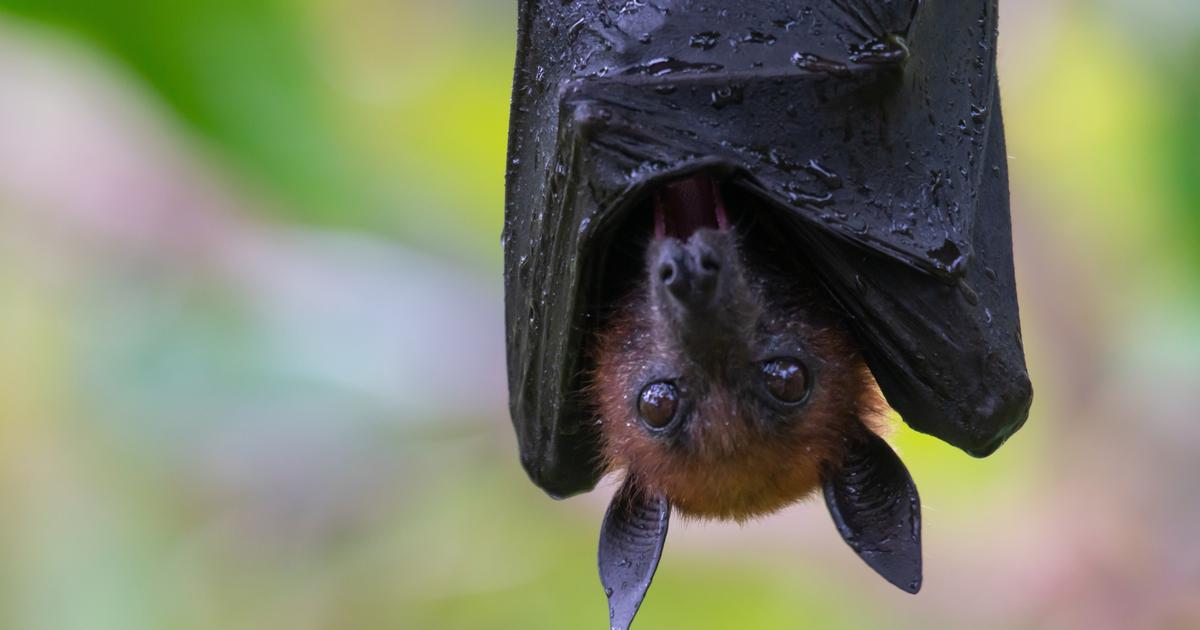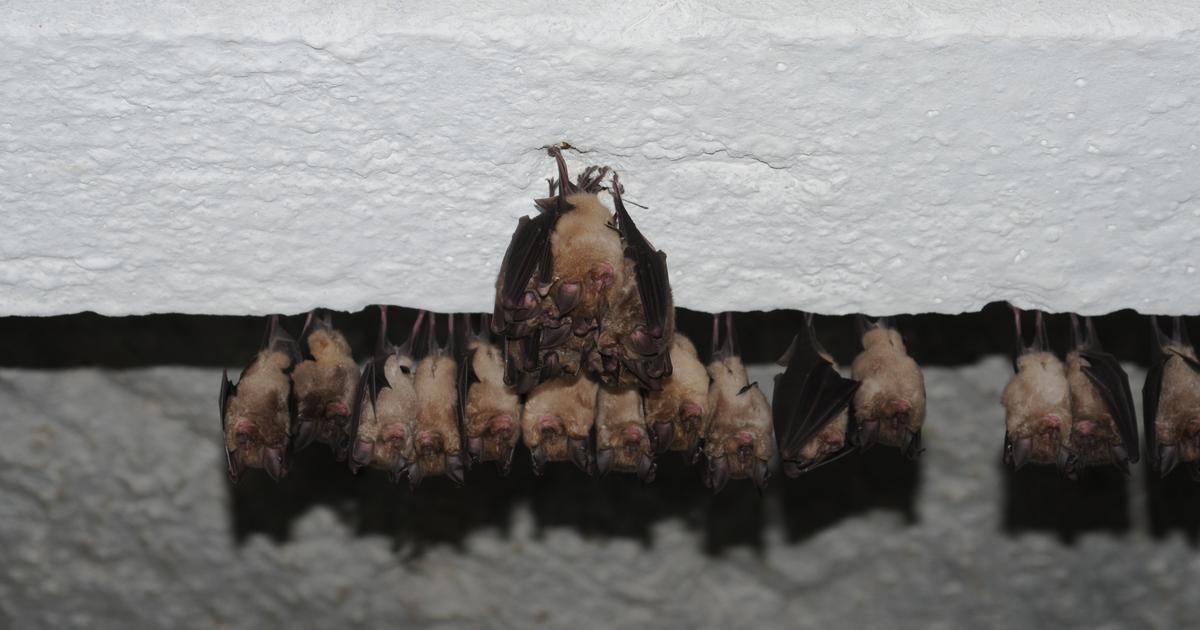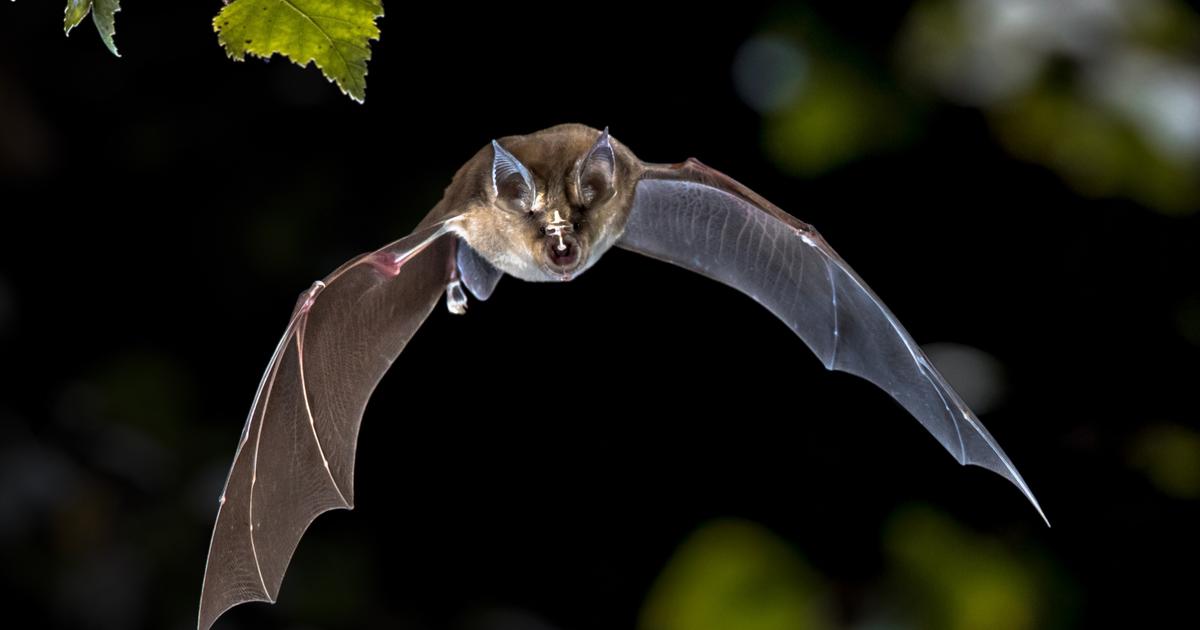They haunt scary films, have produced screen heroes like Batman and are considered to be almost invisible flying artists on the hunt for insects: the bats.
A team of experts headed by Sabine Meyer, bat technician from St. Wolfgang, brings the mysterious animals closer to interested laypeople in exciting guided tours at dusk.
Bockhorn/Dorfen – A group of children from Bockhorn met their parents as part of the municipality's holiday program in Dorfen in the evening for a bat discovery tour.
+
This is what the critters look like: Guide and expert Brigitte Blume explains, among other things, the different types of bats to the children of the Bockhorn holiday program.
© J.Dziemballa
Before the group of around 30 people sets off, they are equipped with small radio receivers.
Guide and expert Brigitte Blume has put an ultrasonic microphone on her head, a kind of strange helmet.
"With this I can receive the different sound waves of the bat species here and forward them to you in the group.
This way you can later hear the nocturnal flight artists yourself, who all make their own unique sounds.”
The sound spectrum can also be shown optically with special devices.
Another connoisseur of the bat family, Evelyn Ertel, has such a small receiver with her.
Similar to an oscillograph, sound is visible here as a bright line, light green peaks twitch across the dark monitor background.
+
Bat detector: The ultrasound of the animals is visible as bright lines in this sonogram.
© J.Dziemballa
"Because bats fly at night, they don't rely on their eyesight, but rather on their extremely well-trained sense of hearing," explains Ertel.
Because with their overly long ears, they could react lightning fast to the sounds they emit themselves.
“Like the sonar of a submarine, they come back from any obstacle.
This allows the bat to assess the distance exactly, it can see with its ears, so to speak.”
But first, as long as there is still some light, the group gets a little lesson in the city park.
"What's her name?" Expert Stephan Goebel wants to know and shows photos of different bat species.
He talks vividly about horseshoe bats, a very special species that is not native to villages.
And about the long-eared bat: “It hunts for insects late in the evening and at night, while birds are out and about during the day.
So it has better protection than in the brightness.
She can fly at different heights and even avoid hanging strings, she controls everything with her ingenious ultrasonic system.”
Test tubes with the droppings of the flying artists also go around, which, unlike birds, crumbles immediately.
"It's from the quinine, which bats can't digest.
After all, they eat around 1,000 insects a night,” explains Blume, looking at astonished faces.
And she shows that bats belong to the mammalian genus, “because they give birth to living offspring”.
The animals usually mate in September before going into hibernation from October to around March.
Young bats are born in early summer, usually in cool and damp dens or basements.
In the meantime it has become almost completely dark, the group sets out to explore.
Some children wear headlights, the pinpoint light of which dances in front of them on the way to a larger body of water.
The goal of the tour is a catchment area near the city, where millions of insects gather, especially at night.
According to Blume, the bats' preferred hunting grounds should be able to hear the animals' different sound waves particularly well here.
And so the group sits on the shore on an artificial stone staircase, listening intently into the darkness.
In fact, thanks to the small receivers, the different noises can be heard well - the spectrum ranges from drum-like hammering to a somewhat slower whistling to a kind of clapping sound that Ertel clearly assigns to a noctule bat: "They can often be found here,
Suddenly, a child screams excitedly, having spotted a bat in the beam of his flashlight.
But as quickly as it was located, it disappeared back into the night just as quickly.
Patience is necessary to track down the mysterious animals.
But the wait is always rewarded, even if the cold of the night gradually creeps into the clothes of some of the group.
Eventually guide Blume gives the signal to leave, she wants to go to another spot on the water to locate bats again.
But none of the new ones of the around six to seven different animal groups on site stop by, after around two hours of attentive searching and listening, the crowd of discoverers goes back to the city.
Before everyone drives home after this exciting natural history lesson, Goebel asks them not to kill the protected animals if bats are found.
"If one ever gets lost in a room, try to get it back outside.
Unlike their wingless namesakes, bats are guaranteed not to nibble or damage anything,” she says.
"And if you ever discover a dead bat, you can bring it to us.
Because we check the animals for diseases at irregular intervals.”















